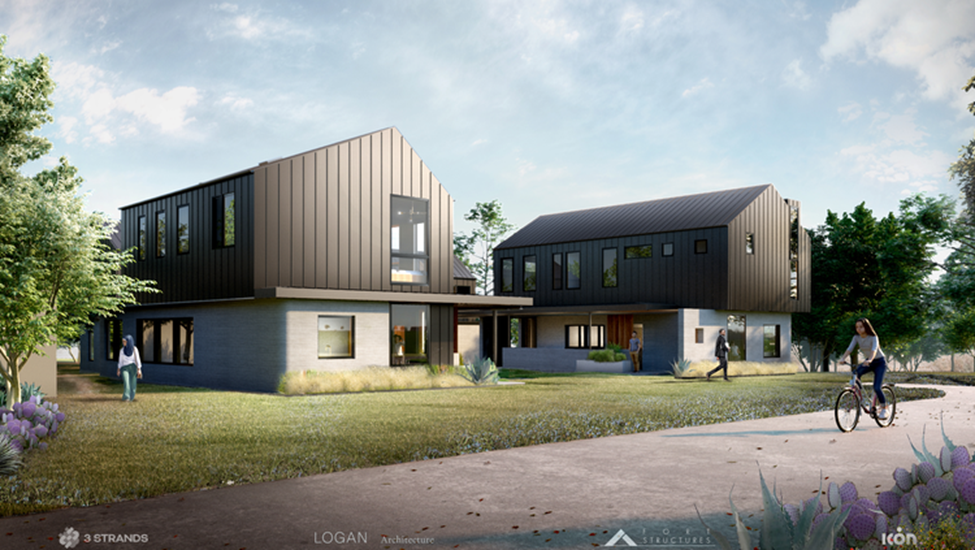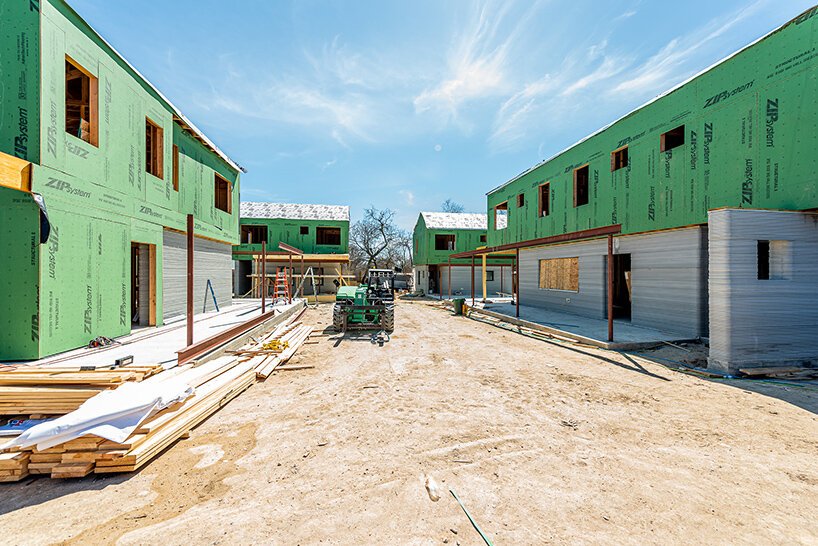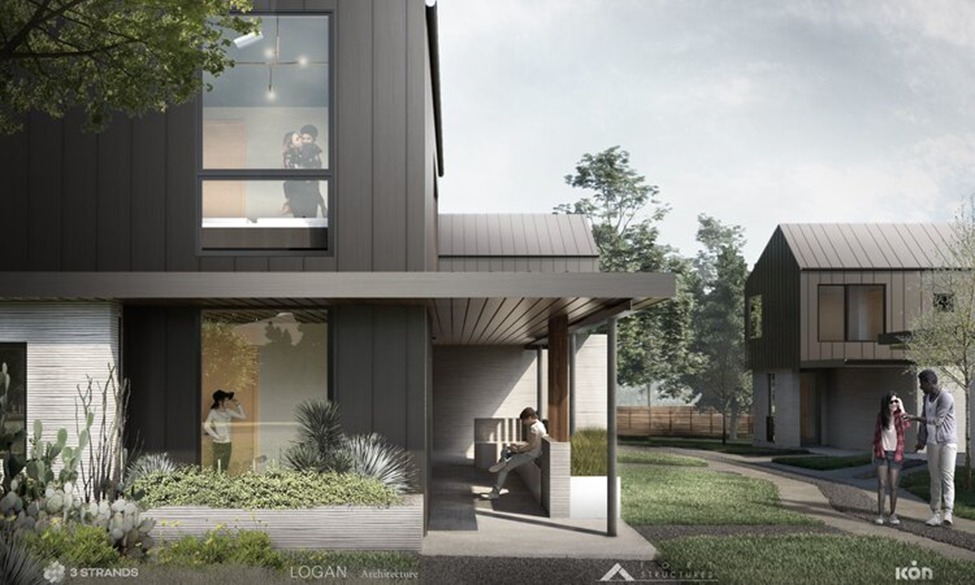
Charles Goulding Jr. takes a look at the latest habitable construction project made using 3D printing technologies.
Block Party
The 3D printed housing movement continues. 34 Millbrook Lane, in Riverhead, New York, made news as the first fully 3D printed home to hit the market in the United States. Priced at $299,999, the house purportedly costs half that of comparable residences.
Not to be outdone, St. Louis-based 3Strands, together with Austin-based ICON, recently unveiled a new home development in Austin, Texas. The homes are not entirely 3D printed. Instead, the ground floors of each are printed while the second floors use traditional construction material.
Like SQ4D (the builder of 34 Millbrook Lane), 3Strands/ICON believes the Austin homes cost roughly half that of comparable housing. “…one of the units up for sale right now on the MLS is currently priced at $450,000, and I believe if you look at the area, those are selling for anywhere from $750,000 to a million per unit,” said ICON’s Dmitri Julius.
Inside the Abodes

The Austin development contains two- and four-bedroom residences that are 1,000 to 2,000 square feet in size.
Each home includes a private yard, covered parking and a covered porch, an open plan organization, a vaulted master bedroom, high-performance HVAC systems, and a minimalist architectural aesthetic.
Each of the four homes took between five to seven days to build and will be ready for habitation in summer 2021.
The Team
ICON is the 3D printing expert on the project. Their vertically integrated “technology stack” consists of a cement-based mix for printing, a specialized printer, and a user-friendly software interface for design.
The Austin project is not ICON’s first; the firm now has twelve printed homes in its portfolio, including a low-cost housing development in Mexico similar in scope to the Austin residences.
3Strands is the developer on the project and Logan Architecture the architect.
High Hopes

3Strands/ICON and SQ4D make another similar claim: both groups believe their homes’ 3D printed foundations are sturdier, more sustainable, and longer-lasting than those of conventional houses. If true, this wave of 3D printed houses has a host of advantages over traditional homes, from material to cost to time of construction.
For all these reasons, 3Strands co-founder and CEO Gary O’Dell have high hopes for what the development means for the future: “We want to change the way we build, own, and how we live in community together.”
The Research & Development Tax Credit
Enacted in 1981, the now permanent Federal Research and Development (R&D) Tax Credit allows a credit that typically ranges from 4%-7% of eligible spending for new and improved products and processes. Qualified research must meet the following four criteria:
- Must be technological in nature
- Must be a component of the taxpayer’s business
- Must represent R&D in the experimental sense and generally includes all such costs related to the development or improvement of a product or process
- Must eliminate uncertainty through a process of experimentation that considers one or more alternatives
Eligible costs include U.S. employee wages, cost of supplies consumed in the R&D process, cost of pre-production testing, U.S. contract research expenses, and certain costs associated with developing a patent.
On December 18, 2015, President Obama signed the PATH Act, making the R&D Tax Credit permanent. Beginning in 2016, the R&D credit can be used to offset Alternative Minimum Tax for companies with revenue below $50MM and for the first time, pre-profitable and pre-revenue startup businesses can obtain up to $250,000 per year in payroll tax cash rebates.
Conclusion
If the 3D printed home industry is to become more than a novelty, it must find affordable ways to scale. 3Strands/ICON’s four-home development is a key step in that very direction.
